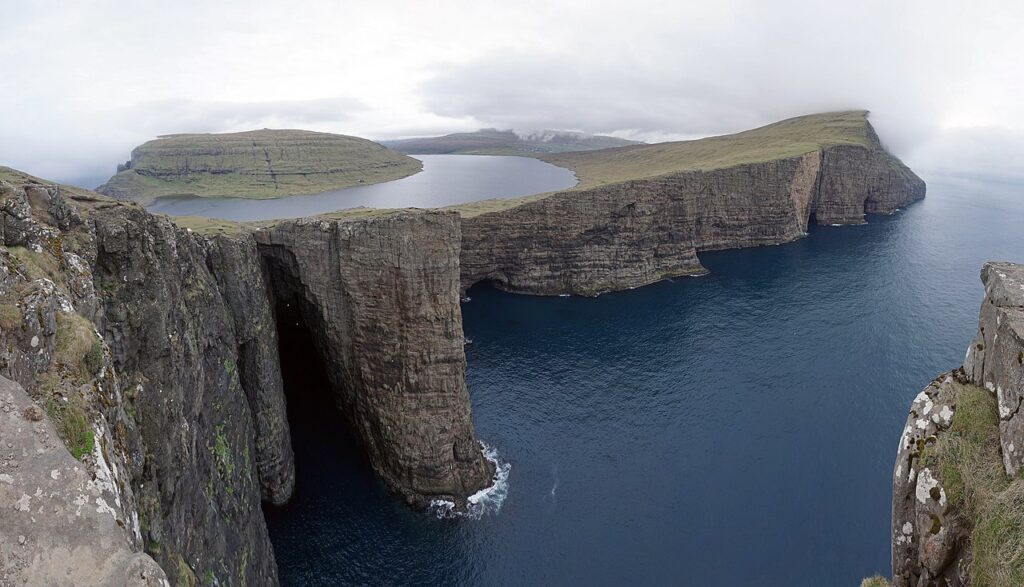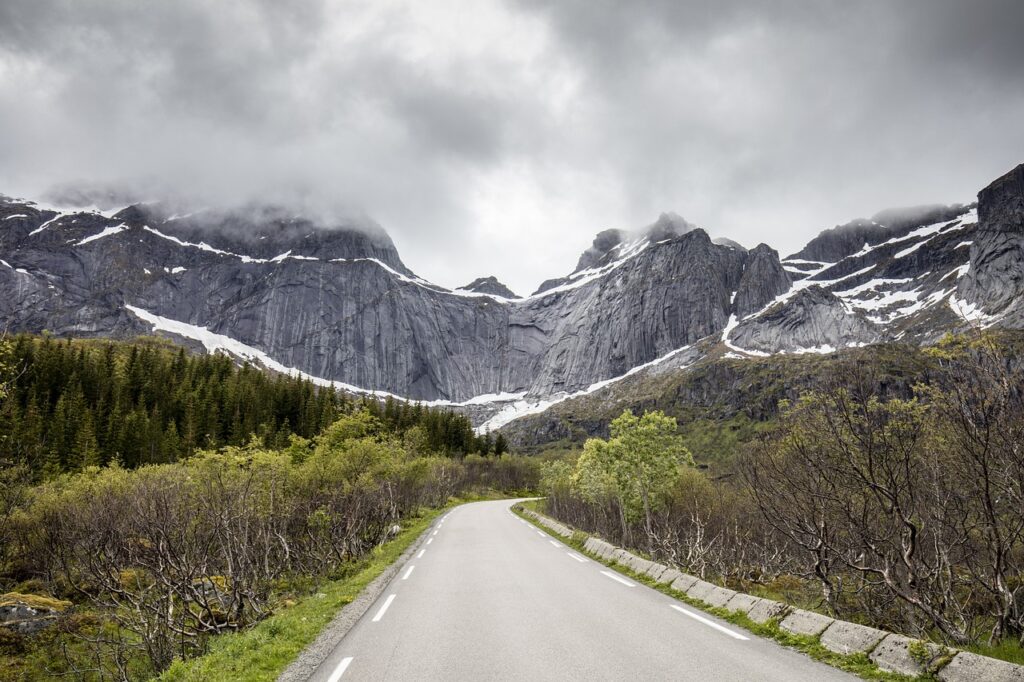Discover Sørvágsvatn Lake in Faroe Islands, The Lake Above the Ocean
Imagine a place so breathtakingly beautiful that it seems like it’s been plucked straight from the pages of a fairy tale. Picture yourself standing on the edge of a tranquil lake, surrounded by towering cliffs and endless skies. This enchanting spot is Sørvágsvatn lake, also known as Leitisvatn lake, nestled on the island of Vágar in the Faroe Islands. What Makes Sørvágsvatn Lake So Popular? What makes Sørvágsvatn lake truly magical is its incredible optical illusion. When you gaze out across the lake, it appears as though it’s floating high above the ocean below, defying gravity in a mesmerizing display. But here’s the secret: the lake is actually just around 30 meters above sea level! It’s all about perspective. As you hike through the rugged terrain surrounding Sørvágsvatn lake, every step offers a new perspective of this mesmerizing landscape. The cliffs rise proudly above, casting dramatic shadows across the crystal-clear waters below. Sunlight dances upon the surface of the lake, illuminating its depths with a captivating sparkle. Sørvágsvatn Lake or Leitisvatn Lake? The Name Dispute When it comes to the name of Sørvágsvatn lake, there’s a bit of a disagreement among the locals. You see, those living in Sørvágur to the west tend to prefer calling it Sørvágsvatn, which translates to “the lake by Sørvágur.” On the other hand, inhabitants of Miðvágur and Sandavágur to the east lean towards calling it Leitisvatn, meaning “the lake by Leiti,” referring to the territory on the eastern side. Interestingly, most locals simply refer to it as Vatnið, which translates to “the lake.” This is a common term understood by everyone in the area as a reference to that specific body of water. However, when folks from other parts of the Faroe Islands mention the lake using one of its given names, that’s when the debate tends to arise. Hiking to Sørvágsvatn Lake: The Trælanípa Trail Typically, the journey to Sørvágsvatn lake kicks off from the village of Miðvágur on the captivating island of Vágar. Now, if you’re coming from the Faroe Islands’ capital, Tórshavn, it’s about a 40-minute drive away. You’ll hop on the sea tunnel to Steymoy for this adventure. Once you’ve arrived in Miðvágur, there are a couple of ways to kick off your trek. You can head towards the Miðvágur church and follow the road signs leading to “Trælanípa/Bøsdalafossur”. Alternatively, you can input the coordinates 62°02’30.9″N 7°11’58.5″W into your navigation system, and it’ll guide you straight to the parking lot where the trail begins. Now, keep in mind, the road to the car park is gravel, but fear not! It’s a manageable drive that any type of car can handle without much hassle. How Much Does the Hike to Sørvágsvatn Cost? Perhaps it may seem unusual to some, but in the Faroe Islands, accessing hiking trails leading to significant natural landmarks often involves an entrance fee. The reasons for this occurrence have been discussed in our article on the Drangarnir Hike. In the case of Sørvágsvatn, the hiking fee is 200 kr per person. Children between the ages of 0 and 15 are admitted free of charge. However, this amount may seem substantial when considering a hike that spans no more than 3 kilometers and can be completed (round trip) in less than 2 hours. Is the Hike to Sørvágsvatn Worth It? Is the Hike to Leitisvatn Lake Worth It? Well, that’s a decision you’ll need to make for yourself. On one hand, the trail itself is relatively easy and short, lacking the awe-inspiring grandeur of some other hikes. But let’s not forget the real highlight here: the viewpoints. From Lake Sørvágsvatn to the Trælanípa Cliff and the Bøsdalafossur waterfall cascading into the sea, these natural wonders offer truly breathtaking vistas. Without considering the considerable cost, there would be no debate—this experience is undeniably worth it! After all, you’ll be immersing yourself in a quintessential feature of Faroese nature. However, whether the price tag justifies the experience of witnessing such a remarkable natural wonder, well, that’s something only you can decide.
Discover Sørvágsvatn Lake in Faroe Islands, The Lake Above the Ocean Read More »









